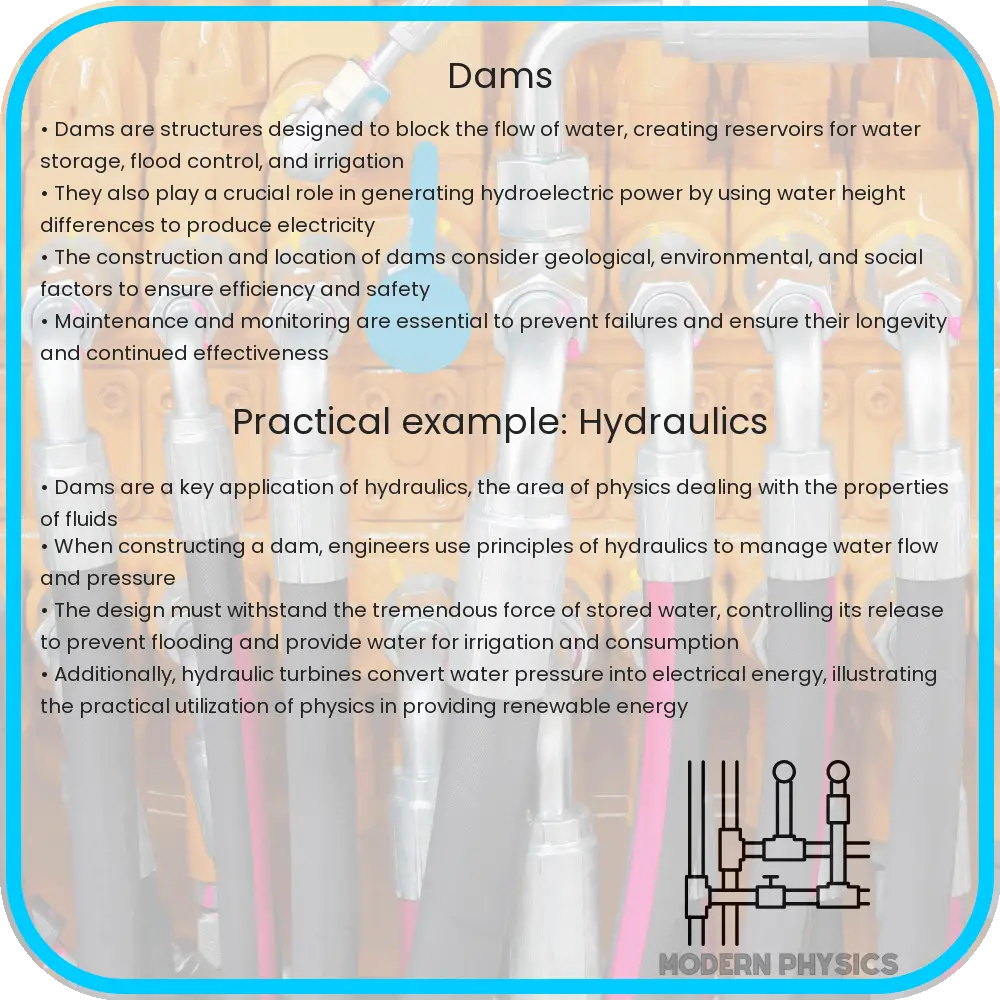Explore the essential principles of dam design, functionality, and safety, including modern technologies and environmental considerations in dam engineering.

Understanding the Fundamentals of Dam Design and Safety
Dams are pivotal structures in modern infrastructure, serving multiple purposes such as water supply, hydroelectric power generation, flood control, and recreational activities. Understanding their functionality, design principles, and safety aspects is crucial for engineers, policymakers, and the general public.
Functionality of Dams
The primary function of a dam is to store water. They create reservoirs to supply water for various uses, including agriculture, human consumption, and industrial processes. Additionally, many dams are integral components of hydroelectric power plants, where stored water is used to drive turbines, generating electricity. In areas prone to flooding, dams play a crucial role in flood management by controlling the release of water to downstream areas.
Design Principles of Dams
Effective dam design involves a complex interplay of engineering disciplines. Key factors include:
- Material Selection: The choice of materials, whether earth, rock, concrete, or a combination, significantly impacts the dam’s design and functionality.
- Geological Considerations: A thorough understanding of the geological conditions of the dam site is essential. This includes assessments of rock and soil stability, seismic activity, and potential for erosion.
- Hydrological Analysis: Designers must accurately estimate the maximum potential water level (flood design) to ensure the dam’s capacity can withstand extreme weather events.
- Environmental Impact: Modern dam design also considers the environmental impact, including effects on local ecosystems and downstream water quality.
Dam Safety and Risk Management
Safety is paramount in dam design and operation. Key safety considerations include:
- Structural Integrity: Regular inspections and maintenance are essential to ensure the structural integrity of the dam, particularly in aging structures.
- Emergency Preparedness: Developing comprehensive emergency action plans for potential dam failures is crucial.
- Technological Advancements: Modern dam safety increasingly incorporates advanced technologies like remote sensing, real-time monitoring systems, and predictive modeling for risk assessment.
By balancing functionality, design principles, and safety, dams can continue to be vital components of global infrastructure while mitigating risks associated with their operation.
Advanced Techniques in Dam Engineering
Advancements in technology and engineering have significantly improved dam design and safety. Innovative materials such as high-performance concrete and advanced geomembranes enhance durability and reduce seepage risks. Computational fluid dynamics (CFD) models aid in understanding water flow patterns, optimizing spillway design for efficient flood control. Earthquake-resistant design features are increasingly incorporated, especially in seismically active regions.
Environmental Sustainability in Dam Construction
Environmental sustainability is a growing focus in dam construction and operation. Efforts include:
- Minimizing Ecosystem Disruption: Strategies such as fish ladders and bypass systems help maintain aquatic biodiversity.
- Reducing Carbon Footprint: Use of eco-friendly materials and construction methods to minimize the environmental impact.
- Community Involvement: Engaging local communities in the planning process to ensure that environmental and social impacts are addressed.
Global Challenges and the Future of Dams
Despite their benefits, dams face global challenges. Climate change poses a significant threat, altering hydrological patterns and increasing extreme weather events. This necessitates a reevaluation of dam safety standards and operational protocols. Additionally, aging dam infrastructure in many parts of the world requires extensive refurbishment or decommissioning, demanding significant financial and engineering resources.
Conclusion
Dams are indispensable for their multifaceted roles in water management, power generation, and flood control. However, their design, construction, and operation must continuously evolve to meet changing environmental conditions, technological advancements, and societal needs. The focus on sustainability, safety, and community involvement will play a pivotal role in the future development of these structures. As the world grapples with the challenges of climate change and sustainable development, the role of dams remains more relevant than ever, underscoring the need for innovative solutions in dam engineering.
